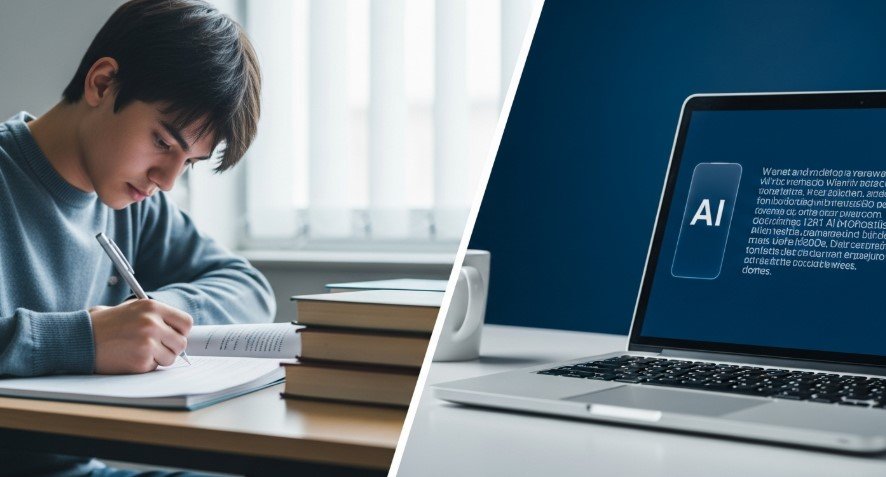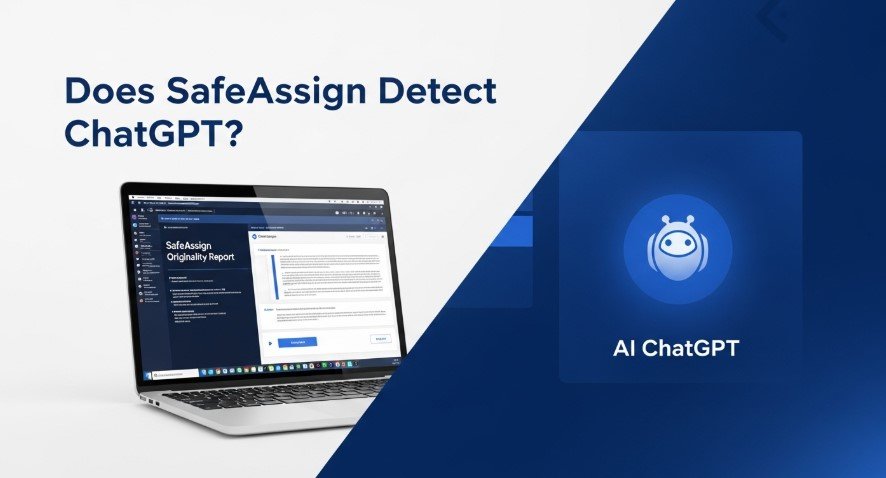Artificial intelligence (AI) tools like ChatGPT are changing how students approach writing. SafeAssign, a plagiarism detection tool used by schools, aims to ensure original work. But can it catch content created by ChatGPT? As of July 2025, this question is critical for students and educators. This article explores SafeAssign’s capabilities, ChatGPT’s functionality, and the impact on academic honesty.

What is SafeAssign?
SafeAssign is a tool built into Blackboard, a popular learning management system (LMS). It checks student assignments for plagiarism by comparing them to a large database, including:
- Institutional archives: Papers submitted at schools using SafeAssign.
- Global Reference Database: Over 59 million student papers.
- ProQuest ABI/Inform: Millions of academic articles and journals.
- Internet sources: Content from public websites.
SafeAssign generates an Originality Report, showing any matches with existing sources. This helps teachers spot copied or uncredited work.
Learn how Blackboard integrates with AI tools in Can Blackboard Detect ChatGPT?
What is ChatGPT?
ChatGPT, created by OpenAI, is an AI language model that produces human-like text. It uses advanced natural language processing (NLP) to generate responses based on user prompts. Students use it for:
- Drafting essays
- Brainstorming ideas
- Editing text
- Answering questions
Its ability to create unique, contextually relevant content makes it appealing but raises concerns about academic integrity.
Can SafeAssign Detect ChatGPT?
As of July 2025, SafeAssign cannot reliably detect ChatGPT-generated content. Here’s why:
- Plagiarism Focus: SafeAssign looks for matches with existing texts. ChatGPT creates original content, which rarely matches SafeAssign’s database.
- No AI Detection: SafeAssign lacks algorithms to identify AI-specific patterns, unlike tools like Turnitin.
- Unique Output: ChatGPT generates fresh text each time, making it hard to flag as unoriginal.
For example, a ChatGPT-written essay is unlikely to be flagged unless it includes direct quotes from existing sources.
Why SafeAssign Struggles with AI
SafeAssign’s limitations in detecting ChatGPT stem from:
- Text Matching: It relies on finding verbatim or paraphrased matches, not AI patterns.
- Evolving AI: ChatGPT’s outputs are increasingly human-like, evading traditional checks.
- Database Dependency: SafeAssign compares against known sources, not AI-generated patterns.
Sources like Walter Writes AI note that SafeAssign may only flag AI content if it accidentally matches existing material, which is rare.
Implications for Academic Integrity
The gap in SafeAssign’s detection raises concerns:
- Misuse Risk: Students might submit AI-generated work, bypassing checks.
- Fairness Issues: Undetected AI use could give some students an unfair edge.
- Need for New Tools: Schools may need advanced AI detection to maintain honesty.
Discussions on Originality.AI highlight the need for updated policies and tools to address AI in education.
Explore AI detection challenges in Can Gradescope Detect ChatGPT?
Alternatives to SafeAssign
While SafeAssign struggles, other tools are stepping up:
- Turnitin: Introduced AI detection in 2023, with 98% accuracy, though false positives occur.
- Originality.ai: Designed to detect AI content with high accuracy.
- GPTZero: Analyzes text patterns to spot AI-generated content.
Educators can also manually review work for signs like generic phrasing or lack of personal insight.
Best Practices for Students and Educators
For Students
- Use AI Ethically: Use ChatGPT for brainstorming or editing, not submitting full assignments.
- Cite Sources: If you use AI ideas, acknowledge them per school guidelines.
- Write Authentically: Ensure your work reflects your own voice and knowledge.
For Educators
- Create Unique Assignments: Require personal reflections or current events, which AI struggles with.
- Combine Tools: Use SafeAssign with AI detectors like Turnitin or GPTZero.
- Teach Ethics: Guide students on responsible AI use.
Learn how to use AI responsibly in How to Humanize ChatGPT Content
Future of AI Detection
Plagiarism tools are evolving. Blackboard may integrate AI detection into SafeAssign, as noted in their white paper on academic integrity. OpenAI is also developing classifiers to identify AI text, which could enhance tools like SafeAssign. For now, educators should combine multiple tools and strategies to ensure fairness.

Conclusion
SafeAssign is effective for traditional plagiarism but cannot reliably detect ChatGPT content in 2025. Its focus on text matching limits its ability to spot AI-generated text. Students and educators must adopt ethical practices and consider advanced tools like Turnitin or GPTZero. By staying informed and proactive, we can maintain academic integrity in the AI era.
FAQs
Can Turnitin detect ChatGPT better than SafeAssign?
Yes, Turnitin’s AI detection, launched in 2023, analyzes text patterns with 98% accuracy, outperforming SafeAssign.
Is using ChatGPT for school cheating?
It depends on your school’s policy. Submitting AI-generated work as your own is often considered dishonest. Always check guidelines.
How can I use AI without getting caught?
Use AI for brainstorming or editing, not final submissions. Edit heavily to reflect your voice and avoid detection.
